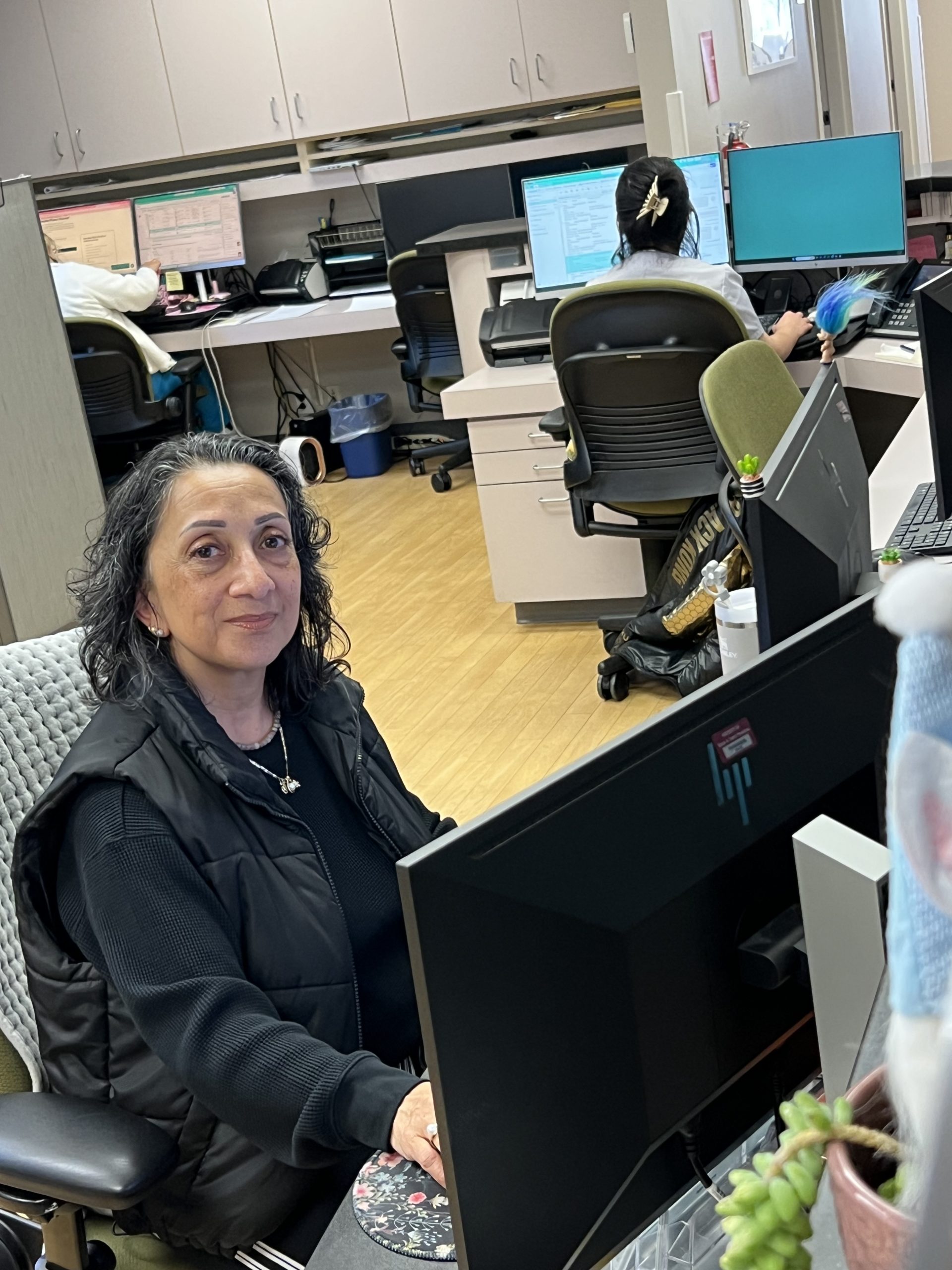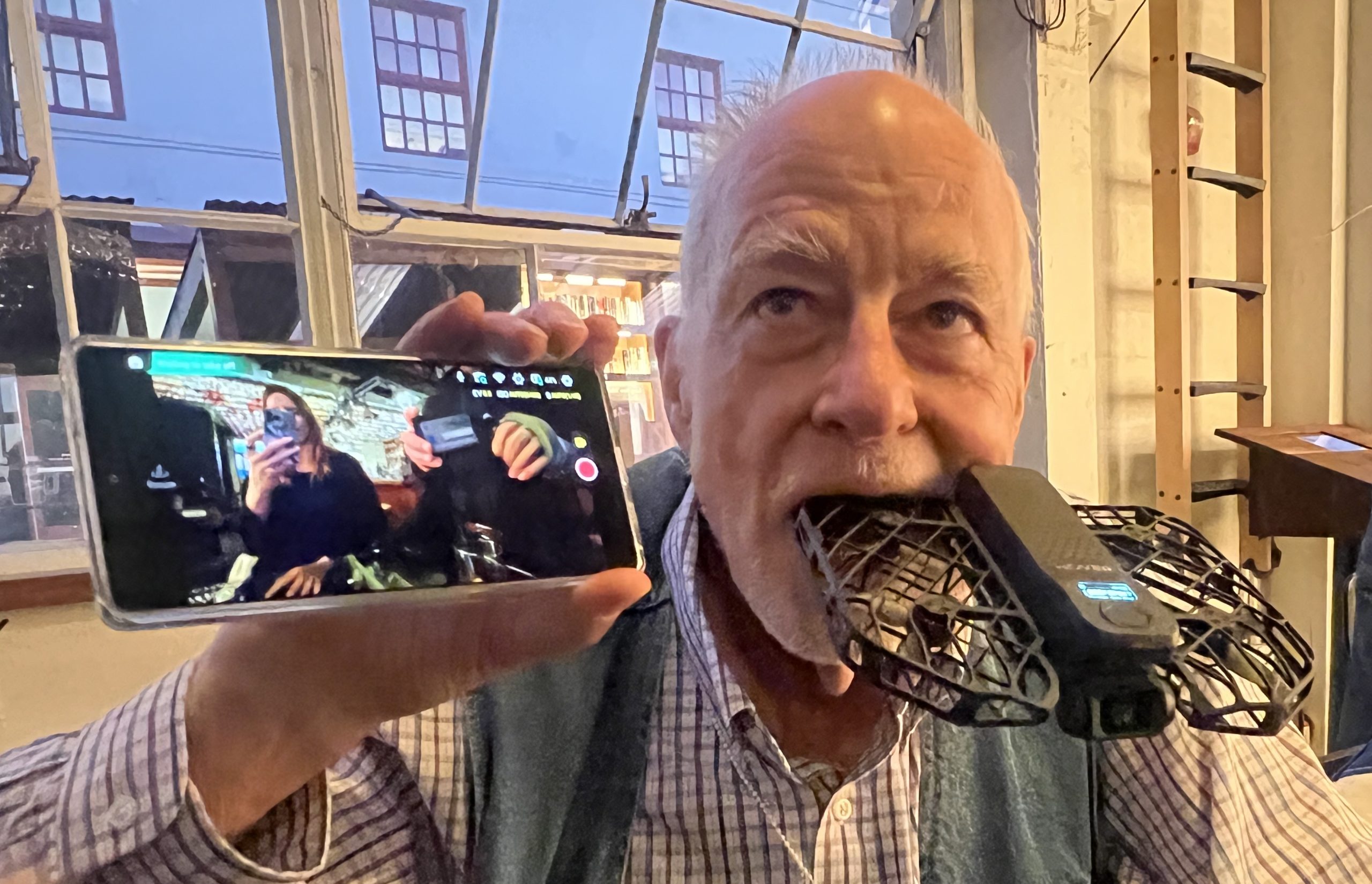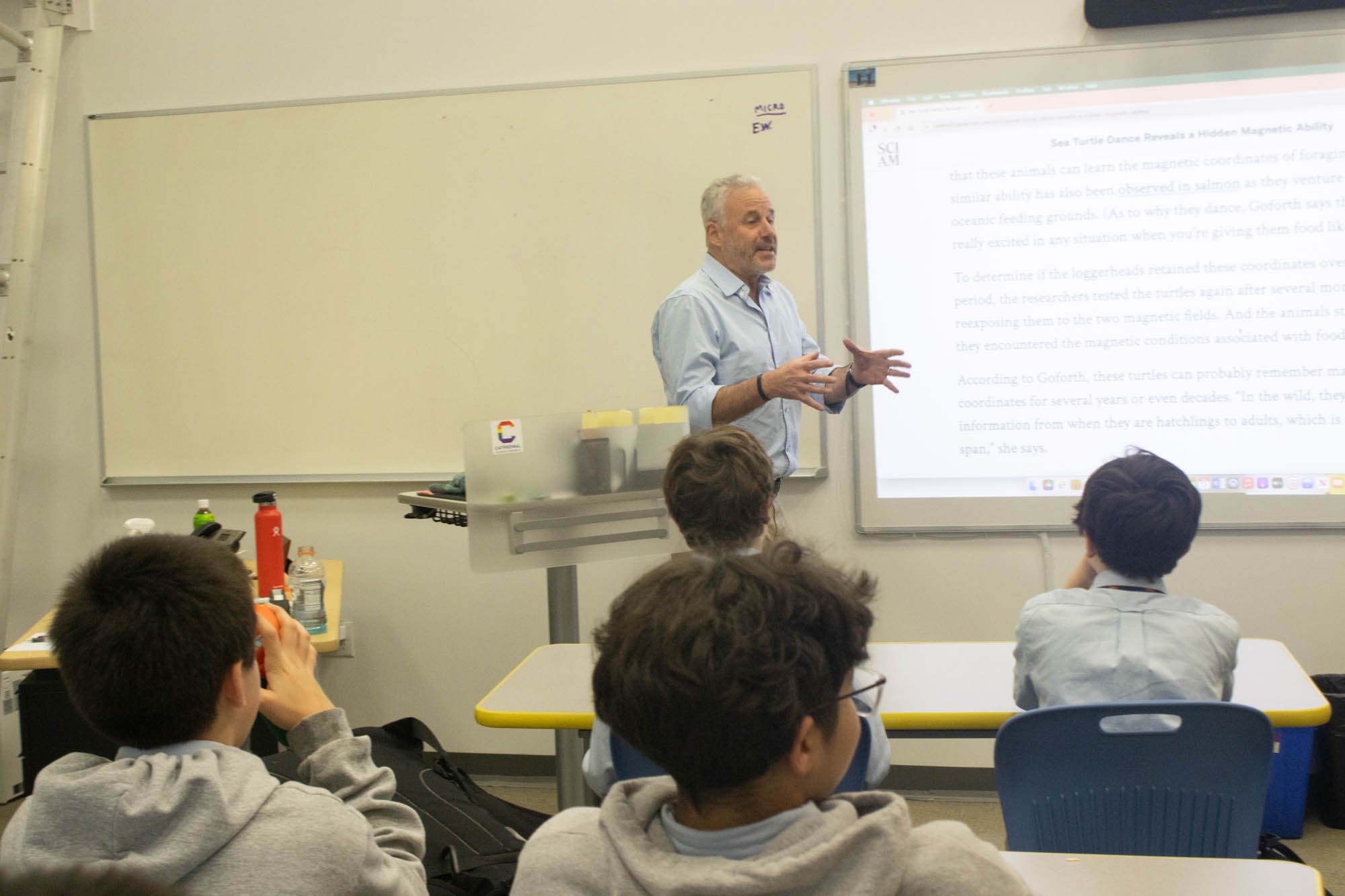Seniors may worry about crime on Muni, but the biggest complaints are fellow passengers – rowdy teens, the homeless and the mentally ill
It’s another bumpy afternoon ride on the 38-Geary, San Francisco’s most heavily used Muni line. The bus, with its accordion-like middle, is rattling and bouncing so hard that only riders immune to motion sickness can read.
The blue seats reserved for seniors fill up fast. Older people, many toting shopping carts, some with canes, crowd on board. The bus lurches and a white-haired man yells, “Wait! Wait!,” as the driver starts to pull out of the stop. He barely avoids falling. The bus stops and a few seniors get up and gesture for him to take their seat.
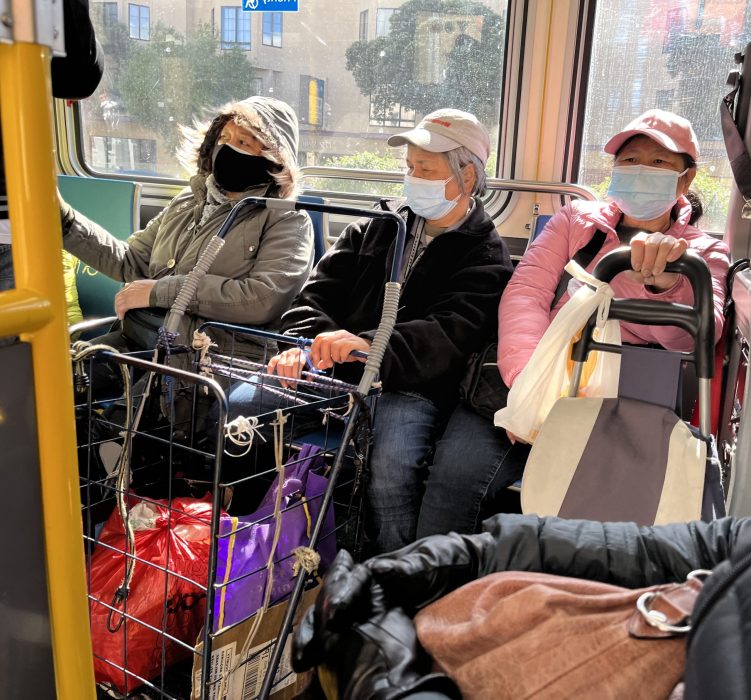
Sixty-five-year-old Adora is holding tight and getting ready to get off at Masonic Avenue.
Bundled against a chilly February afternoon, she heads north, walking quickly on her way to pick up her grandson. “No, I don’t feel safe on Muni,” she said. Like most of the seniors interviewed for this story, she preferred not to give her last name.
A few months back, an apparently disturbed man tried to rip off her mask. He backed off when she resisted. “He didn’t know I had a can of Mace in my purse,” she said. “I would have used it.” A native San Franciscan, Adora complains that so much about the city has changed. There are “homeless and crazy people everywhere,” she said.
San Francisco’s Muni is a lifeline for seniors. Ridership plummeted during the worst of the pandemic but is recovering. Over the last six months, seniors 65 and older accounted for an average of more than 700,000 rides a month, according to the San Francisco Municipal Transit Authority. Roughly 32,000 seniors use senior cards each month, compared to 46,000 before the pandemic.
Interviews with more than a dozen seniors in San Francisco neighborhoods on the west and east sides of the city often elicited complaints about late buses and rowdy teenagers, as well as worries about crime and a feeling of discomfort with homeless and disturbed people on the bus or train. Even people who said they don’t worry about their safety expressed distaste for some of their less fortunate fellow riders.
“I’m afraid of some things. but not the Muni,” said Mission District resident Toby, 68, adding “I sometimes even fall asleep on the subway.” But she’s annoyed that the buses shake and rattle so much, and “it’s sad that unfortunate people on the bus sometimes smell bad.”
Smelling bad isn’t a crime, of course. But what about real crime? In the three years before the pandemic, there were 1,298 serious crimes reported on Muni in 2017, 1,165 in 2018, and 1,089 in 2019, according to the SFMTA. The numbers for 2020 and 2021 are lower, but since ridership was so much lower, it’s difficult to make a valid comparison.
The 38-Geary and the 14-Mission are the most crime-ridden lines in the city, according to the SFMTA. Since they are also two of the most heavily traveled, it’s not surprising that so many incidents are reported. But, robbery and assault, crimes that many seniors fear the most, are not very common. Robberies averaged fewer than 14 a month in the three pre-pandemic years, while assaults averaged between five and eight a month, according to the SFMTA.
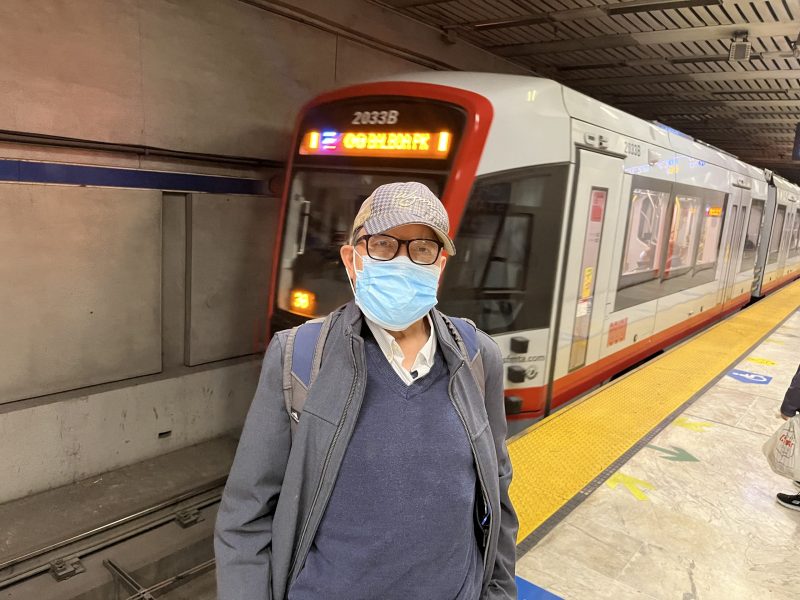
Even so, some riders simply don’t feel safe. Wayne Yee was waiting for the N-Judah at Civic Center one recent afternoon. “As an Asian American, I don’t feel safe,” said the 57-year-old. “I won’t ride when there aren’t many people around, and I tell that to my wife and daughter.” In general, he doesn’t think of himself as a fearful person, yet said, “I was at the Golden Dragon massacre – riding Muni can almost be that scary.”
Dennis O’Brien, a Noe Valley hairdresser, is a frequent rider on the 24-Divisadero. Muni isn’t too bad, he said, but “sometimes I feel like I’m being held hostage.” O’Brien, who is 73, said drivers need to be firmer with passengers who act out. “There are too many mentally unstable types, yelling and shouting and the driver never does anything.”
Another widespread complaint: buses so crowded they sometimes don’t stop.
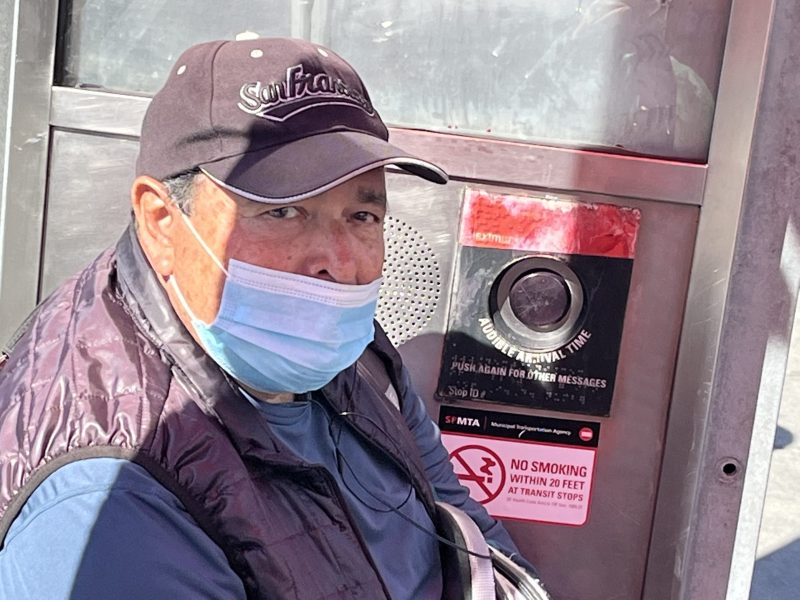
That really irritates 73-year-old Miguel, who fumed at a stop near 24th and Mission streets that he sometimes has to wait half an hour for a bus. As for crime, he said, “I always sit in the front, never the back. It’s safer.” But Ceci, 68, waiting nearby, was unconcerned. “I don’t have problems with the bus.”

As ridership fell during the pandemic, Muni responded by reducing service across the system. Some lines stopped running altogether or were severely reduced, although they are slowly being restored. Service cuts are the biggest gripe he has with Muni, said Lewis, 84, while waiting for the 24-Divisadero. He lives on Hayes Street north of the Golden Gate Park Panhandle. Before the pandemic, he would take the 21-Hayes as he headed downtown. That line remains suspended; as a result, he has to take two buses or walk an extra mile, either of which lengthens his trip.
He isn’t fearful of riding the bus, but he is annoyed by rowdy kids and obnoxious adults. “I just move to another seat or get off the bus,” he said.
On Potrero Hill, getting downtown isn’t easy and many streets in the neighborhood are quite steep, a real problem for many seniors.
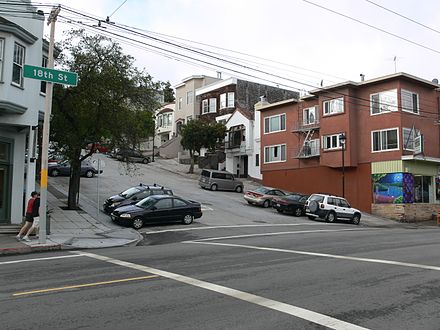
For example, the Potrero Hill Health Center on Wisconsin Street is close to a stop for the 19-Polk. But not close enough, said Edward Hatter, executive director of the Potrero Hill Neighborhood House. The half block between the center and the bus stop is too steep for some adults. “We’ve been asking Muni to change the route a little bit for years, but it hasn’t happened,” he said, adding that the Hill “has never had good Muni service.”
Muni, he said, claims ridership on the line is too small to merit changes.
Despite the annoyances cited by seniors we spoke with, a customer satisfaction survey of Muni found that most seniors expect to return to public transportation when the pandemic ends. Only about 16 percent said they expect to ride the system less often or not at all.
Overall, 57 percent of the riders surveyed last year rated service on the system as “good” or “excellent,” a decrease of about 2 percent over the 2019 survey.
It’s not surprising that seniors are sticking with Muni. Driving and parking in San Francisco are increasingly difficult, and rideshare options, which were quite cheap a few years ago, have gotten much more expensive and out of reach of many. What’s more, Muni offers free service to seniors over 65 who earn less than about $90,000 a year.
So seniors may continue to ride the system – but will likely continue to grumble.


